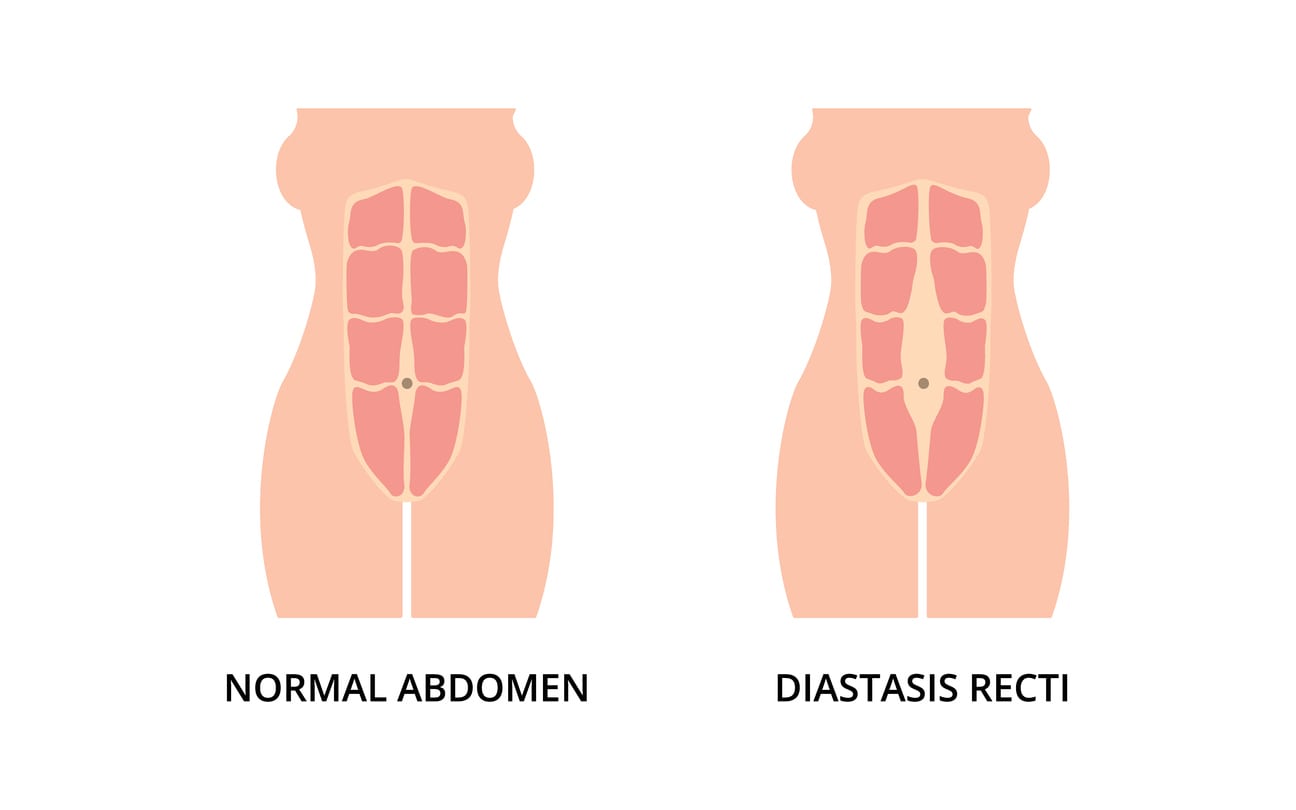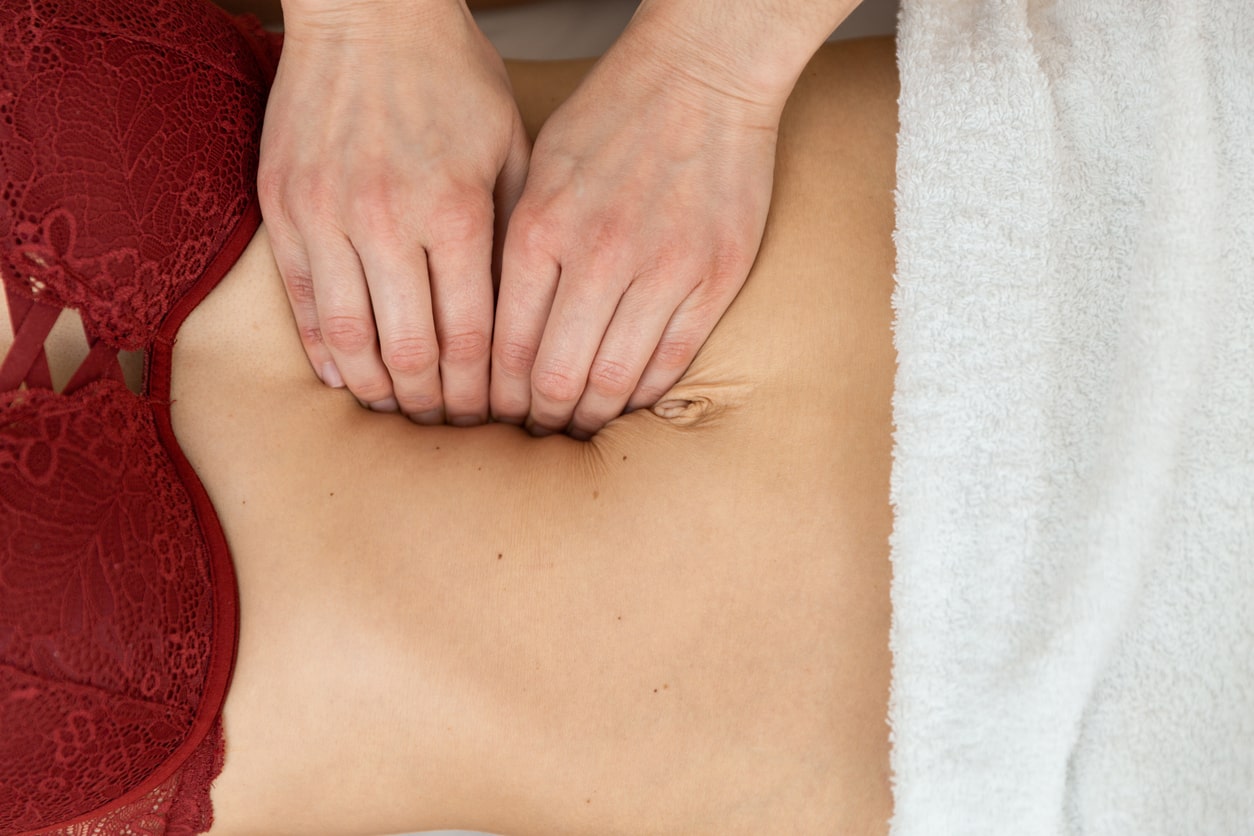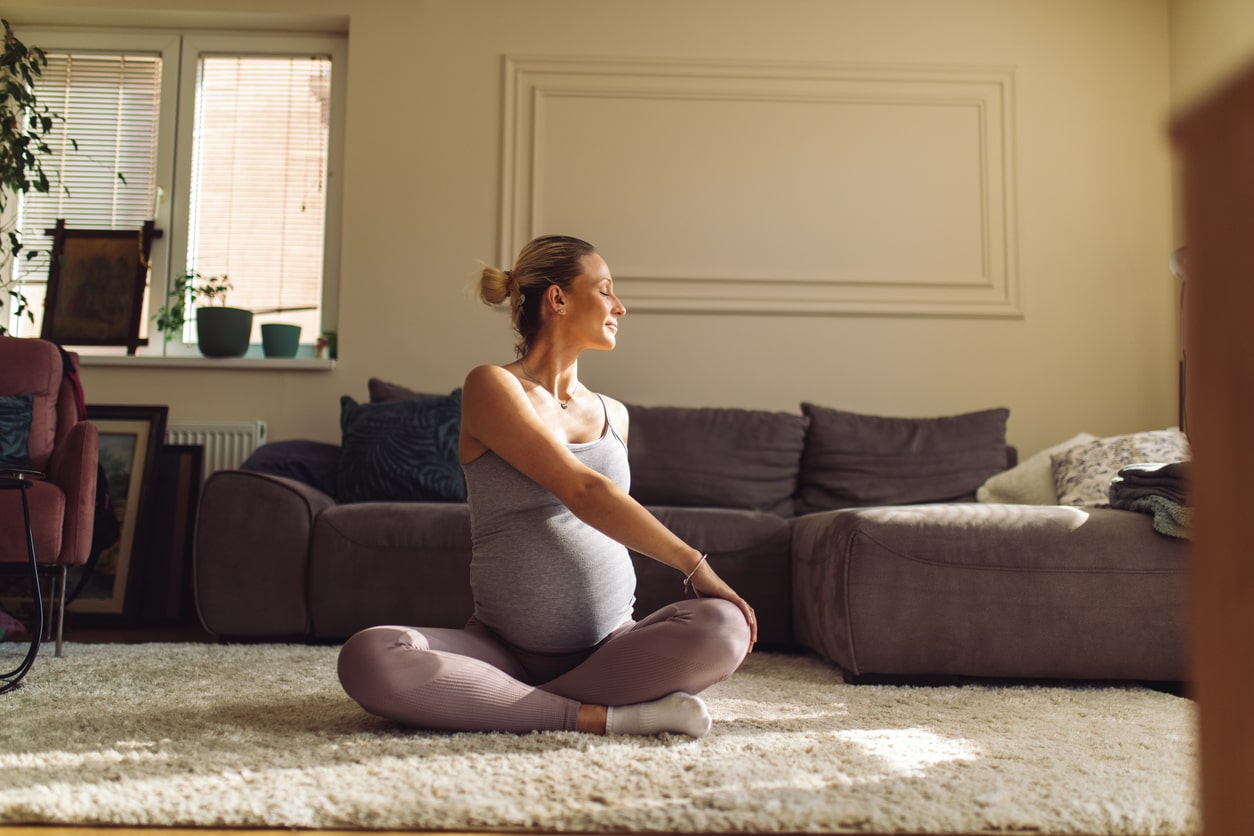Guide to The Best Exercises for Diastasis Recti (Abdominal Separation)

The body undergoes remarkable changes during pregnancy to accommodate and create a new life. For example, to make room while growing a precious little one, the abdominal muscles are designed to separate.
Depending on genetics, height, weight, and a host of other factors, this can look different from one person to the next. Although many bounce back soon after giving birth, some women continue to deal with abdominal separation long after pregnancy, which is known as diastasis recti.
Whether you’re curious about this diagnosis, wondering whether you have it, or want to learn how to correct it, we’re sharing everything you need to know the best exercises for diastasis recti.
Related: Do Postpartum Belly Wraps and Bands Actually Work?
What Is Diastasis Recti?
One of the most common issues that affect postpartum women is diastasis recti abdominis. A study by the National Library of Medicine describes DRA as the “separation of the rectus abdominis muscle and is quantified by the inter-recti distance.”
These muscles are casually known as a six-pack and run vertically along the front of a stomach. Connecting the two sides and running down the midline is a connective tissue called the linea alba.
While it’s normal for the abdominal wall to stretch and the linea alba to pull apart during pregnancy to allow for a growing baby, DRA occurs when this expansion continues into the post-pregnancy and recovery period instead of retracting back after delivery. It can happen regardless of whether you have a vaginal birth or a C-section.
How to Tell if You Have Diastasis Recti

Diastasis Recti is extremely common in postpartum women, with the NLM study suggesting that as many as 90% of women experience this condition, especially those that don’t partake in postpartum workouts.
Symptoms include impaired core and pelvic floor muscles, urinary incontinence, poor posture, lower back pain, and many other health problems. However, the most visible sign of DRA is a bulge or doming that protrudes around the belly button area. You may notice a pooch or coning when you contract your ab muscles, including sitting up or leaning back in bed.
If you suspect you have diastasis recti, it’s best to speak with your healthcare provider, a physical therapist, or a personal trainer. Although there is a simple test to confirm for yourself before seeing your doctor.
How to Test for Diastis Recti At-Home

To test, lie on your back on a flat surface with your feet flat on the floor and knees bent. Next, carefully lift your shoulders off the floor as if you’re performing a sit-up. Then, feel for separation between your right and left abdominals. Your doctor will likely diagnose you with DRA if you have an abdominal gap of two centimeters or more.
Can Diastasis Recti Be Corrected With Exercise?
While diastasis recti sometimes will correct itself, research shows that about 60% of women still experience DRA after six weeks postpartum and 39% at six months postpartum.
Fortunately, this study suggests that an exercise program can help new moms decrease the severity of the ab separation. It asked postpartum women to complete three exercise sessions per week for a total of 12 weeks, focusing on core strength, breathing techniques, and mindfulness teachings.
What Are The Best Diastasis Recti Exercises?
Fortunately, there are core exercises that can help to heal and strengthen the muscles, reducing the symptoms of diastasis recti. The best diastasis recti postpartum workout focuses on strengthening your deep core muscles, including the transverse abdominis, which extends between the rib cage, from the front, and the oblique muscle.
Since the transverse abdominal muscle is the deepest core muscle, strengthening it will provide support to your other ab and pelvis muscles.
Regardless of the exercise, focus on keeping the belly pulled in, rather than pushing the belly out and causing the bulging or coning of the midline. Here are a few diastasis recti workouts to consider.
Single-Leg Toe Taps
Performing single-leg toe taps and heel taps works not only your lower back and deep core muscles but also the glutes and pelvic floor muscles.
To begin, start by lying on your back with your knees bent at a 90-degree angle and shins parallel to the ground. As you inhale, focus on keeping your pelvic muscles tight while lowering your right leg down until your toe touches the ground.
Exhale while bringing your foot back to the starting position and switch to the left leg. Start with 20 repetitions, and you can also straighten your leg if you need a bigger challenge.
Bent-Leg Dead Bugs
Dead bugs are an excellent exercise to strengthen the transverse abdominis. Start by lying on the floor with your back and spine flat. Then, bring your knees toward your chest, stopping when they’re over your hips while lifting your arms straight in the air.
With your toes pointed, lower your right leg and left arm toward the floor, being careful to keep them just hovering above the floor and not touching it. Bring your rig
Heel Slides
Doing heel slides while maintaining a pelvic tilt helps to increase control of your core muscles while strengthening.
First, lie on your back, ensuring your shoulders and lower back are in contact with the floor. Tilting your pelvis and squeezing your abdominal muscles is the best way to get your entire upper and lower back flat against the floor.
Keep that pelvic tilt throughout the exercise. Next, point your toes and slide your heel across the floor until you straighten your leg completely. Then, slide it back to the starting position and switch sides.
Glute Bridge
Glute bridges focus on building the muscles in your core, butt, and hamstrings. Start by lying flat on your back with your knees bent, feet flat on the mat, and engaged in a pelvic tilt. While keeping your pelvic muscles tight, slowly lift your hips up until they’re above your ribs.
Be sure to keep your shoulders on the mat. Hold this exercise at the top for 5 to 10 seconds, lower it, and repeat again.
Exercises To Avoid With Diastasis Recti
Unfortunately, not all ab exercises are recommended when healing diastasis recti and may actually worsen the degree of muscle separation. Performing the wrong abdominal exercises increases intra-abdominal pressure, which puts undue strain on the linea alba, as well as the core and pelvic floor.
As a general rule, you want to avoid any exercises that place direct pressure on your stomach and cause the telltale bulging or coning. This includes crunches or sit-ups, planks, push-ups, leg lifts, and several yoga and pilates moves.
However, there are a few of these movements that are okay as long as you’re using modifications that decrease abdominal pressure. Partaking in physical therapy can also provide a plan on what moves are advised for core stability or what abdominal exercises to avoid.
How Long Does It Take To Fix Diastasis Recti With Exercise?
If ab separation doesn’t start to return after six to eight weeks, that’s a good sign to start exercising. Once you start exercising, they’re isn’t a set time limit that is proven to fix diastasis recti. It depends on a variety of factors, including how consistently you exercise, the types of strengthening workouts, and the severity of the ab separation.
Some new moms may begin to see improvement within three months of regular exercise, while others may need up to a year. If you’re concerned about a lack of results, it’s recommended to consult a healthcare physician.
Other Ways To Improve Diastasis Recti?

Unlike many workouts to gain endurance or become a bodybuilder, more weight and tougher workouts aren’t necessarily helpful when improving diastasis recti. So, you should also avoid lifting a lot of weight if you have DRA, such as any weight more than your baby.
Another activity you can try is deep breathing. While it may not seem like a core exercise, learning to breathe using your diaphragm can help to activate your core muscles. This is when you breathe not just using your chest but rather drawing a deep breath from under your rib cage. It can also help your posture, which in turn strengthens core muscles.
How to Prevent Diastasis Recti
Since ab separation is normal and expected during pregnancy to make room for a growing baby, there’s no way to completely prevent diastasis recti. However, there are a few things to help prevent severe diastasis recti during pregnancy and help the connective tissue retract back on its own after delivery.
Healthy Weight Gain
During pregnancy, focus on eating healthy foods to nourish your growing little one and limit excess weight gain. Be sure to contact your doctor if you have concerns about not gaining enough weight or maintaining a healthy weight.
Exercise Throughout Pregnancy
Pregnancy is not the time to start a strenuous workout regimen. However, staying active during pregnancy and exercises like prenatal yoga or prenatal pilates can help reduce the likelihood of diastasis recti.
Limit Heavy Lifting
Putting too much strain on your abdominals, which are already stretching to accommodate a growing baby, is not recommended. So, be mindful of not lifting heavy items during pregnancy and always use the correct form to lift objects safely.

